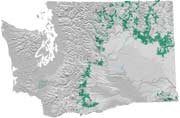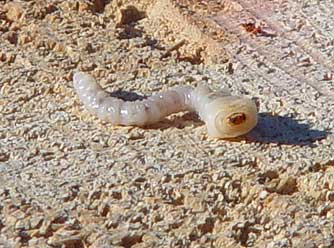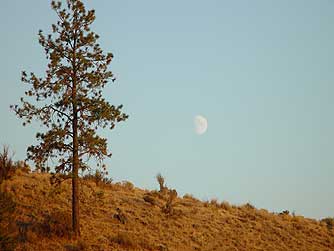
Ponderosa pine
![]() Ponderosa
pine trees (Pinus ponderosa) grow in the Columbia basin at lower
elevations, forming the arid timberline where forest transitions to shrub-steppe
and grasslands. It's a stately tree that favors places where the pondering
is good, on the border between the refuge of forests and prospect of wide-open
spaces. Ponderosa pine extend into the moister, cooler mid-elevation forests
and mix with interior Douglas fir, western
larch, quaking aspen, and lodgepole
pine.
Ponderosa
pine trees (Pinus ponderosa) grow in the Columbia basin at lower
elevations, forming the arid timberline where forest transitions to shrub-steppe
and grasslands. It's a stately tree that favors places where the pondering
is good, on the border between the refuge of forests and prospect of wide-open
spaces. Ponderosa pine extend into the moister, cooler mid-elevation forests
and mix with interior Douglas fir, western
larch, quaking aspen, and lodgepole
pine.
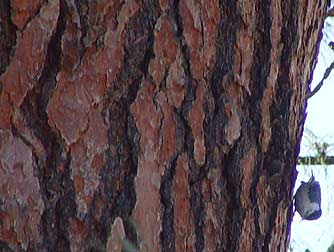 This
is a hardy, drought tolerant tree having thick , protective bark comprised
of stacked plates that sometimes look like puzzle pieces. The deep cracks in old tree bark smell pleasant, like vanilla with a hint of butterscotch or warm cookie. Ponderosa needles
are bundled in threes and they are five to ten inches long, forming tufts
at branch ends, with three to six inch long pine cones having sharp teeth.
Old growth ponderosas grow 150 to 180 feet tall and 3 to 4 feet in diameter.
Some people refer to ponderosa pine trees in logging terms as bull pine
or yellow pine depending on the quality of its wood.
This
is a hardy, drought tolerant tree having thick , protective bark comprised
of stacked plates that sometimes look like puzzle pieces. The deep cracks in old tree bark smell pleasant, like vanilla with a hint of butterscotch or warm cookie. Ponderosa needles
are bundled in threes and they are five to ten inches long, forming tufts
at branch ends, with three to six inch long pine cones having sharp teeth.
Old growth ponderosas grow 150 to 180 feet tall and 3 to 4 feet in diameter.
Some people refer to ponderosa pine trees in logging terms as bull pine
or yellow pine depending on the quality of its wood.
Ponderosas provide food and shelter for a wide variety of
birds at the edge of the shrub-steppe including northern
flicker, Lewis's
woodpecker and other woodpeckers, white-breasted and pygmy nuthatch, Clark's nutcracker,
and 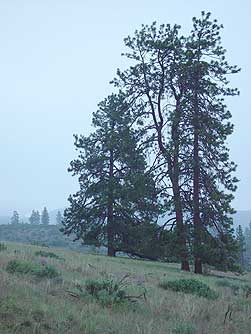 mountain
chickadee. Ponderosa pine are also the favorite nesting tree for the
colorful neotropical bird, western
tanager, which migrate north from Cenral America to breed. Ponderosas
make good roosts for turkey
vulture, wild turkey and raven, sallying
perches for Western
bluebird, and nest and hunting platforms for red-tailed
hawk, osprey, bald
eagle, American
kestral, merlin, great
horned owl, and various other raptors. Loose, deep-furrowed bark and
abandoned nest cavities of dying ponderosas also provide shelter for mouse-eared bats that flip-flap in desert nights hunting mosquitos and moths, and for pallid bats that forage for ground-dwelling insects including beetles. Ponderosas also feed and shelter a variety of insects of course,
from pine seed
bugs to flathead borer beetles to ants, to butterflies such as pine white and western pine elfin,
in turn providing a major food source for various birds and mammals.
mountain
chickadee. Ponderosa pine are also the favorite nesting tree for the
colorful neotropical bird, western
tanager, which migrate north from Cenral America to breed. Ponderosas
make good roosts for turkey
vulture, wild turkey and raven, sallying
perches for Western
bluebird, and nest and hunting platforms for red-tailed
hawk, osprey, bald
eagle, American
kestral, merlin, great
horned owl, and various other raptors. Loose, deep-furrowed bark and
abandoned nest cavities of dying ponderosas also provide shelter for mouse-eared bats that flip-flap in desert nights hunting mosquitos and moths, and for pallid bats that forage for ground-dwelling insects including beetles. Ponderosas also feed and shelter a variety of insects of course,
from pine seed
bugs to flathead borer beetles to ants, to butterflies such as pine white and western pine elfin,
in turn providing a major food source for various birds and mammals.
Young ponderosas provide winter browse for mule deer to survive tough winters while older stands may get infested with dwarf mistletoe, a plant parasite that is the host plant for the thicket hairstreak and other mistletoe butterflies.
Ponderosas seedlings planted at the edge of open country should be planted from local stock or seeded from local trees to ensure good adaptation and should be shaded from blazing summer sun, caged from deer, and if possible, watered in summer until roots reach deep moisture in a year or two.
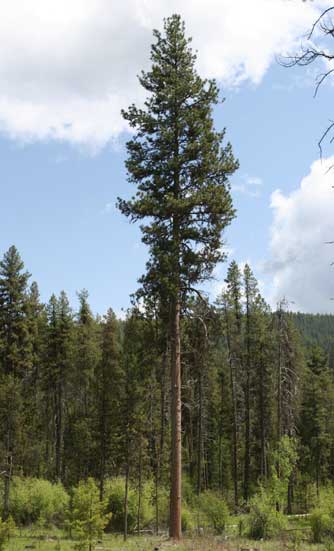
Ponderosa pine tree - Pinus ponderosa
growing in a mixed forest at mid-elevation
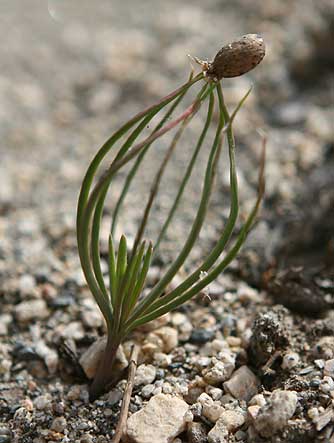
Ponderosa pine seedling
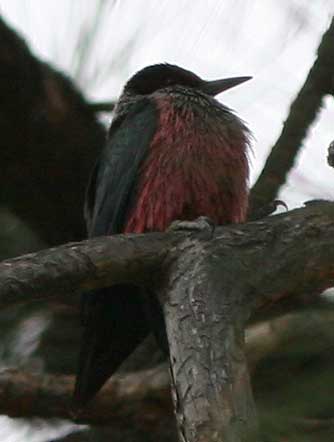
Lewis' Woodpecker perched on a ponderosa branch
candidate for endangered-species listing in Washington
State
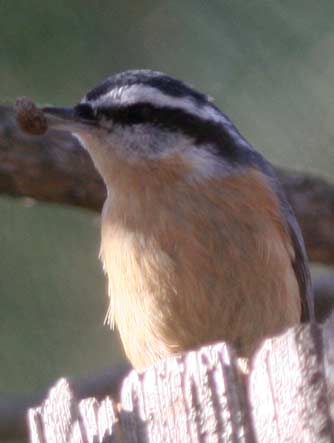
Red-breasted nuthatch
with a ponderosa pine seed
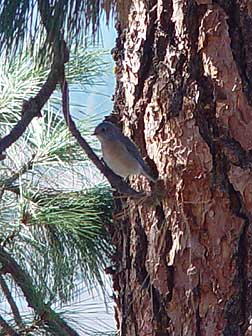
Ponderosa pine tree
foraged by Western
bluebird
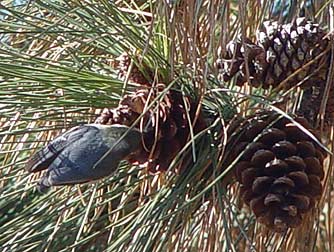
Old growth ponderosa pine
providing seeds for pygmy
nuthatch
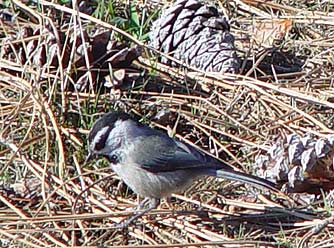
Mountain chickadee foraging under ponderosa
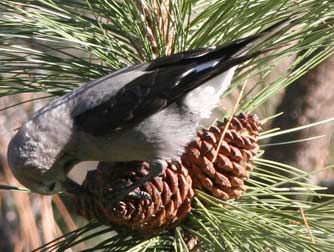
Clark's nutcracker
collecting ponderosa pine seeds
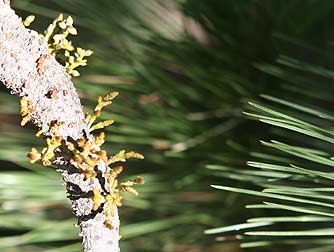
Ponderosa tree parasite Western dwarf mistletoe
or Arceuthobium campylopodum, a host plant for thicket
hairstreak butterfly
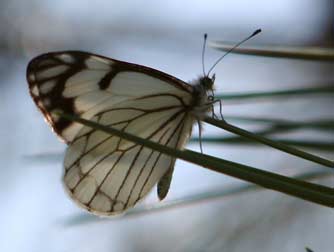
Pine white butterfly
landing on ponderosa pine needles
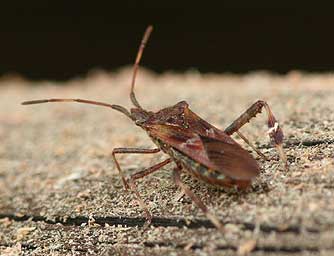
Leaf-footed pine seed bugs
reduce seed production but don't otherwise damage pine
trees
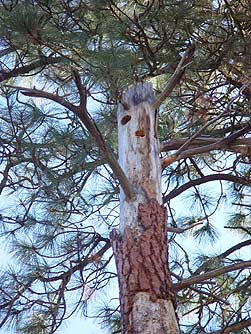
Ponderosa pine snag
habitat for mouse-eared and pallid bats, woodpeckers and other birds
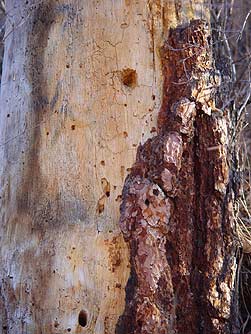
Dead ponderosa pine
bird and insect damage
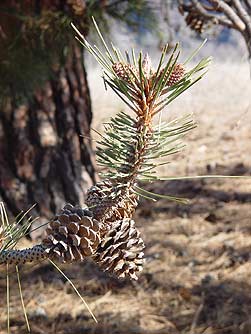
Ponderosa pine needles
used for winter browse by mule deer
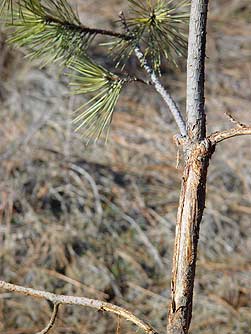
Young ponderosa
bark rubbed by mule deer buck antlers
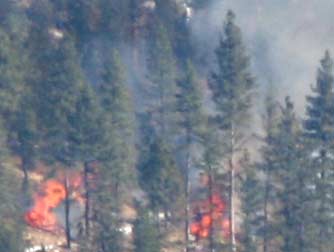
Forest fire in ponderosa pine trees
